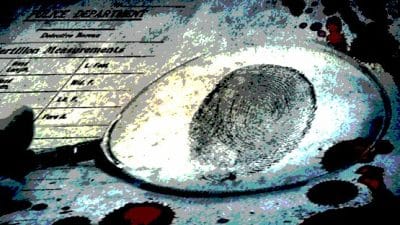
When it comes to baseball, any serious fan of the sport will tell you that the greatest thing about the game is its rich history. One of the best sports movies of all time is baseball’s “Field of Dreams” with Kevin Costner and the legendary James Earl Jones.
One of the more memorable scenes between the two stars came when they were digging through old newspaper clippings about Dr. Archibald “Moonlight” Graham. Jones mentions that while the story is impressive there is possibly a “Doc Graham” in nearly every small town.
In a world that is need of positive, feel-good stories right now, it’s time to shine a spotlight on West Virginia Tech’s Joe Goddard.
Goddard was born in the summer of 1950 in the small town of Sophia, W.Va. As a teenager, he discovered a love for the ball diamond, and while honing his game, he popped up on the radar of Marshall University’s skipper, Jack Cook.
Cook convinced Goddard to attend Marshall and catch for his Thundering Herd nine. His stay in Huntington was cut short after the 1971 season as his sophomore numbers sparked a serious interest from Major League Baseball as a whole and the National League’s San Diego Padres in particular.
The Padres and the Montreal Expos had joined the show in 1969 via the latest MLB expansion. So, Goddard would have an opportunity to get in on the ground floor of the then-infant ballclub.
At age 20, Joe packed up his catcher’s mitt and spikes, leaving West Virginia for the Pacific Northwest. Tri-city was the first professional jersey Goddard would wear, but with his defensive skills and unmeasurable knowledge of the game, he wasn’t long for low Class A baseball.
Goddard started his second season with Alexandria of the Texas League, Class AA baseball, but it would end with him playing in the Majors as a 21-year-old.
The baseball term for getting a late-season call up is “having a cup of coffee with the big club.” Goddard would play in 12 games under one of the more famous skippers in Don Zimmer. Zimmer had replaced the team’s original manager, Preston Gomez, for the 1972 season after completing a 12-year playing career when the Padres offered him a shot a running their MLB club. “Popeye,” as he was known in the baseball world, was quick to notice the IQ of his young catcher and wasn’t afraid to tell veteran players about it.
Goddard would play another four seasons in the Padres organization, but never found his was back to the major leagues. In 1976, he realized it was time to refocus his goals in life.
The opportunity to join the ranks as a coach in the Padres organization was there as Zimmer wasn’t the only one that noticed the depth to which Goddard understood the game. Faced with a tough decision, he turned down staying in professional baseball, feeling he may be able to do more good if he chose a different path.
Joe headed back to West Virginia with his focus being on finishing his degree from Marshall. That same year in Raleigh County, Independence High School was set to open its doors for the first time, and the school would be in need of a baseball coach to start a program from scratch.
From 1976 on, the rest of the story is nothing short of historical. In the sports world, it’s not uncommon for folks to say “Yankee Stadium is the house that Ruth built,” and later that “Safeco Field is the house that Ken Griffey Jr. built.” One more for good measure is Lucas Oil Stadium is “the house that Peyton Manning built.” While these mega-superstars paved the way for those beautiful facilities, it wasn’t like any of them actually jumped on a tractor to build something. But if you catch Joe with a minute or two, he would rather talk about what it took to clear the land to build the high school a diamond than his time with the Padres.
At the end of his amazing 36-year coaching stint at Independence, the school named the facility “The Joseph H. Goddard Field.” It was so fitting because it was actually the house that Joe Goddard built with his own hands.
There are also multiple stretches over that same 36 years that Joe would step in and coach other sports at the school any time they were shorthanded.
The number of lives touched in a positive manner by both the students and student-athletes being exposed to a man of Joe’s character has to be well in the tens of thousands.
It’s hard to choose which is the most impressive part of the Goddard story, but any list would have to include his humility and success in raising his children.
The next major appreciation for Goddard came in 2015, when Marshall inducted the living-legend into its athletics Hall of Fame.
Once Joe reached his 60s, he was still looking for ways to share both his knowledge and love for the game with young players. After a stint helping coach the summer league West Virginia Miners, Goddard reached out to a fellow baseball lifer in Lawrence “Big Picture” Nesselrodt.
The two combined have over eight decades of baseball between them, so the only natural thing to do was for Goddard to join the staff a West Virginia Tech University after the school relocated to its current campus in downtown Beckley.
The love of the game these two men share is a story of biblical proportion, and if you find yourself in the Beckley area, don’t pass up on a chance to give Ness and Joe a tip of the old ball cap.
This week, Goddard receives yet another distinguished honor as the West Virginia state coaches association will be adding him to its hall of fame.
We will conclude the story by saying congratulations to Joe Goddard and “Go Golden Bears!.”
The only thing missing from this remarkable story is a cool nickname like “Moonlight.”
Story by Jerry Carter










